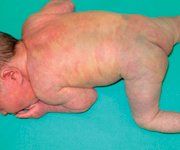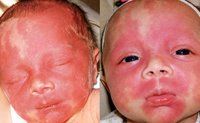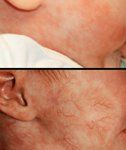- Acne
- Actinic Keratosis
- Aesthetics
- Alopecia
- Atopic Dermatitis
- Buy-and-Bill
- COVID-19
- Case-Based Roundtable
- Chronic Hand Eczema
- Drug Watch
- Eczema
- General Dermatology
- Hidradenitis Suppurativa
- Melasma
- NP and PA
- Pediatric Dermatology
- Pigmentary Disorders
- Practice Management
- Precision Medicine and Biologics
- Prurigo Nodularis
- Psoriasis
- Psoriatic Arthritis
- Rare Disease
- Rosacea
- Skin Cancer
- Vitiligo
- Wound Care
Article
Accurate diagnosis of infantile birthmarks crucial to avoid complications
Vascular birthmarks are very ccommon in newborns, and some varieties affect up to 50 percent of babies. But the challenge for dermatologists can be the early diagnosis and the ability to distinguish the subtle differences between a banal birthmark and one that calls for quick action.

Key Points
San Francisco - Vascular birthmarks are very common in newborns, and some varieties affect up to 50 percent of babies. But the challenge for dermatologists can be the early diagnosis and the ability to distinguish the subtle differences between a banal birthmark and one that calls for quick action.

"But the timely distinction between port wine stains, salmon patches and infantile hemangioma is critical in order to appropriately counsel the parents and manage these patients. Accurate diagnosis will lead to more rapid intervention in the cases that require action, and will potentially prevent morbid complications, particularly in the case of certain high-risk infantile hemangiomas," she says.
Recognizing changes

"The key to clinical recognition of these birthmarks include their midline location, their dull pink to red color, and borders that may merge vaguely with surrounding normal skin," Dr. Cordoro says. "Some are quite extensive and may be confused with true port wine stains."

Another common birthmark is the infantile hemangioma (IH). These are the most common benign vascular tumors of childhood. They may be very subtle or even absent in the first few weeks of life, and when they do appear, they are often misinterpreted as a "bruise" or a "scratch." Their proliferation in the first months of life is characteristic, and this period of growth is predictably followed by spontaneous involution over the next several years.
"Very early on, a small subset of infantile hemangiomas can be tricky to diagnose and distinguish from other vascular birthmarks, even by experienced clinicians," Dr. Cordoro says. "Especially if they are reticular or nonproliferative, they can easily be confused initially with reticulate port wine stains."

PWS differ from salmon patches clinically in that their territory extends beyond the midline position, according to Dr. Cordoro.

Newsletter
Like what you’re reading? Subscribe to Dermatology Times for weekly updates on therapies, innovations, and real-world practice tips.
















